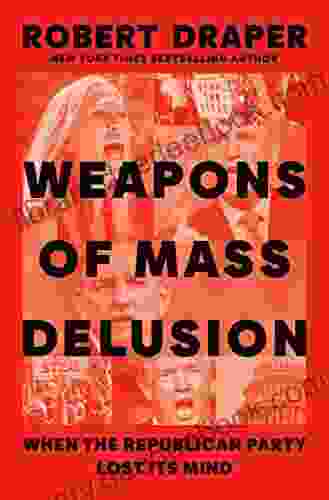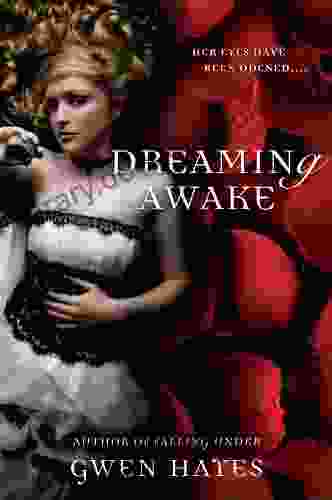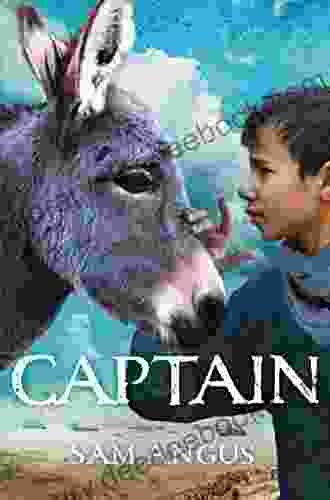Choreographies of 21st Century Wars: Oxford Studies in Dance Theory

5 out of 5
| Language | : | English |
| File size | : | 34956 KB |
| Text-to-Speech | : | Enabled |
| Screen Reader | : | Supported |
| Enhanced typesetting | : | Enabled |
| Word Wise | : | Enabled |
| Print length | : | 379 pages |
| Lending | : | Enabled |
Dance has long been used as a way to express the human experience, and war is no exception. In the 21st century, dance has been used to both represent and critique war in new and innovative ways.
This book, Choreographies of 21st Century Wars, explores the ways in which dance has been used to represent and critique war in the 21st century. The book is divided into three parts: the first part examines the use of dance to represent war, the second part examines the use of dance to critique war, and the third part examines the use of dance to promote peace.
The Use of Dance to Represent War
Dance has been used to represent war in a variety of ways. Some choreographers have used dance to create realistic depictions of war, while others have used dance to create more abstract representations of war.
For example, the choreographer William Forsythe's piece "In the Middle Somewhat Elevated" (2007) is a realistic depiction of war. The piece features dancers who perform a series of violent and aggressive movements. The dancers are dressed in military uniforms, and the set is designed to look like a battlefield.
In contrast, the choreographer Akram Khan's piece "Desh" (2010) is a more abstract representation of war. The piece features dancers who perform a series of fluid and graceful movements. The dancers are dressed in traditional Indian clothing, and the set is designed to look like a desert.
Both of these pieces use dance to represent war, but they do so in very different ways. Forsythe's piece is a realistic depiction of war, while Khan's piece is a more abstract representation of war.
The Use of Dance to Critique War
Dance has also been used to critique war. Some choreographers have used dance to show the horrors of war, while others have used dance to show the futility of war.
For example, the choreographer Pina Bausch's piece "Café Müller" (1978) is a powerful critique of the horrors of war. The piece features dancers who perform a series of violent and aggressive movements. The dancers are dressed in white, and the set is designed to look like a war-torn city.
In contrast, the choreographer Merce Cunningham's piece "Variations V" (1965) is a more subtle critique of the futility of war. The piece features dancers who perform a series of random and meaningless movements. The dancers are dressed in black, and the set is designed to look like a void.
Both of these pieces use dance to critique war, but they do so in very different ways. Bausch's piece is a powerful critique of the horrors of war, while Cunningham's piece is a more subtle critique of the futility of war.
The Use of Dance to Promote Peace
Dance has also been used to promote peace. Some choreographers have used dance to show the beauty of peace, while others have used dance to show the power of peace.
For example, the choreographer Twyla Tharp's piece "Push Comes to Shove" (1976) is a celebration of the beauty of peace. The piece features dancers who perform a series of fluid and graceful movements. The dancers are dressed in white, and the set is designed to look like a peaceful landscape.
In contrast, the choreographer Martha Graham's piece "Appalachian Spring" (1944) is a more powerful statement about the power of peace. The piece features dancers who perform a series of strong and determined movements. The dancers are dressed in traditional American clothing, and the set is designed to look like a frontier landscape.
Both of these pieces use dance to promote peace, but they do so in very different ways. Tharp's piece is a celebration of the beauty of peace, while Graham's piece is a more powerful statement about the power of peace.
Dance has been used to represent, critique, and promote peace in a variety of ways. This book has explored some of the ways in which dance has been used to address the issue of war in the 21st century.
Dance is a powerful tool that can be used to communicate a wide range of emotions and ideas. It is a valuable tool for understanding the human experience, and it can be a powerful force for change.
5 out of 5
| Language | : | English |
| File size | : | 34956 KB |
| Text-to-Speech | : | Enabled |
| Screen Reader | : | Supported |
| Enhanced typesetting | : | Enabled |
| Word Wise | : | Enabled |
| Print length | : | 379 pages |
| Lending | : | Enabled |
Do you want to contribute by writing guest posts on this blog?
Please contact us and send us a resume of previous articles that you have written.
 Page
Page Story
Story Genre
Genre Reader
Reader Paperback
Paperback Shelf
Shelf Bibliography
Bibliography Foreword
Foreword Preface
Preface Synopsis
Synopsis Footnote
Footnote Manuscript
Manuscript Tome
Tome Classics
Classics Narrative
Narrative Biography
Biography Autobiography
Autobiography Reference
Reference Dictionary
Dictionary Thesaurus
Thesaurus Narrator
Narrator Character
Character Librarian
Librarian Catalog
Catalog Card Catalog
Card Catalog Borrowing
Borrowing Periodicals
Periodicals Research
Research Scholarly
Scholarly Journals
Journals Reading Room
Reading Room Rare Books
Rare Books Special Collections
Special Collections Study Group
Study Group Thesis
Thesis Dissertation
Dissertation Storytelling
Storytelling Awards
Awards Theory
Theory Textbooks
Textbooks Janet Pesicka Watson
Janet Pesicka Watson Chandelle Lavaun
Chandelle Lavaun Michael G Moore
Michael G Moore Pablo J Boczkowski
Pablo J Boczkowski Mounira M Charrad
Mounira M Charrad Robert Kowalski
Robert Kowalski K N Hunter
K N Hunter T V Reed
T V Reed Les Brown
Les Brown Eric Auxier
Eric Auxier J Gavin Paul
J Gavin Paul Michael Kranish
Michael Kranish Mathieu Rigouste
Mathieu Rigouste Jeremy Scahill
Jeremy Scahill William C Lewis
William C Lewis Charles A Stevenson
Charles A Stevenson Erika Robuck
Erika Robuck Regina Felty
Regina Felty David Borthwick
David Borthwick Barrett Tagliarino
Barrett Tagliarino
Light bulbAdvertise smarter! Our strategic ad space ensures maximum exposure. Reserve your spot today!

 William PowellWeapons of Mass Delusion: Propaganda, Misinformation, and the Erosion of...
William PowellWeapons of Mass Delusion: Propaganda, Misinformation, and the Erosion of... Peter CarterFollow ·3.9k
Peter CarterFollow ·3.9k Thomas PynchonFollow ·4.1k
Thomas PynchonFollow ·4.1k Theodore MitchellFollow ·5.7k
Theodore MitchellFollow ·5.7k Alex FosterFollow ·11.4k
Alex FosterFollow ·11.4k Efrain PowellFollow ·12.8k
Efrain PowellFollow ·12.8k David MitchellFollow ·4.9k
David MitchellFollow ·4.9k Gary CoxFollow ·7.7k
Gary CoxFollow ·7.7k Dylan MitchellFollow ·16.4k
Dylan MitchellFollow ·16.4k

 Ralph Ellison
Ralph EllisonHealth Care Global Viewpoints: Samantha Whiskey
Samantha Whiskey is a global health...

 Gabriel Garcia Marquez
Gabriel Garcia MarquezTeacher Educators' Reflections on Culturally Relevant...
In today's...

 Levi Powell
Levi PowellSustainable Project Management: The GPM Reference Guide...
In today's rapidly changing world,...

 Isaac Bell
Isaac BellThe Captivating World of "Dreaming Awake Falling Under"
A Journey Through...

 Clarence Brooks
Clarence BrooksGovernance Regulations Valuations Mergers And...
In today's complex and ever-changing...
5 out of 5
| Language | : | English |
| File size | : | 34956 KB |
| Text-to-Speech | : | Enabled |
| Screen Reader | : | Supported |
| Enhanced typesetting | : | Enabled |
| Word Wise | : | Enabled |
| Print length | : | 379 pages |
| Lending | : | Enabled |












